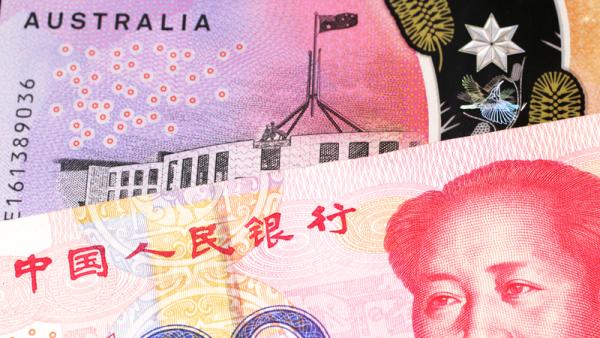Vitoria Holdings LLC / Shutterstock

James Laurenceson, Director, Australia-China Relations Institute, University of Technology Sydney |
This article appeared in the print edition of The Australian Financial Review on May 21 2020. It also appeared online on May 20 2020.
Australian business leaders talking up the benefits of economic engagement with China have been copping a belting.
On April 30, Peter Jennings, executive director of the Australian Strategic Policy Institute, said of Australian business people best connected with China: ‘They have to understand the national interest is more important than a handful of wealthy businessmen continuing to make themselves rich dealing with an authoritarian China’.
If that were the extent of it, nearly everyone, including most businesspeople, would agree. But the critique of Australia’s business sector alleges something far more sinister.
A fortnight later Jennings said business leaders had been ‘thoroughly discredited’ for, in his view, advocating a position that amounted to ‘just shut up and take money from China’.
Liberal MP Andrew Hastie accused Helen Sawczak, chief executive of the Australia China Business Council, of having ‘a low estimation of our country’ for having suggested that Australia did not need to lead the pack in calling for an international inquiry into the global spread of COVID-19.
And after iron ore magnate Andrew Forrest publicly aired his objections to the Australian government’s approach to managing China relations, The Sydney Morning Herald's international and political editor Peter Hartcher described him as a ‘craven character’ and claimed he had ‘chosen to campaign for a foreign authoritarian political movement’ and, somehow, ‘made the case for Australia to surrender’.
In another contribution, Hartcher assessed that when Elders chief executive Mark Allison called for ‘pragmatism’ in Australia’s approach to China, what he really meant was the ‘abandonment of principle’.
Last month Nine News political editor Chris Uhlmann said ’business captains and university chiefs have shown they can’t handle the truth. As long as the rivers of gold flowed, they were happy to urge silence’ but ‘silence means consent’, including towards the ‘imprisonment of a million Uighurs in Xinjiang’.
It is hard to know where to start with such an absurd narrative.
It is, after all, Australian businesses, not the Australian government or media commentators, who have created the $235 billion two-way trade relationship with China, more than 2.5 times greater than that with Japan, in second place.
Trade is, by definition, mutually beneficial. As David Irvine, the former boss of ASIO and now head of the Foreign Investment Review Board, noted last year, one in five Australian jobs is trade-related, while foreign direct investment supports one in 10 jobs.
Earlier this month, Deputy Prime Minister Michael McCormack put it succinctly: ‘Trade equals jobs and more trade means more jobs’.
Producing and selling to a domestic population of just 25 million is a recipe for cratering Australia’s national interest. Engaging with markets other than China would be wonderful, if only they existed.
Over the past decade, the annual value of this country’s total exports has increased by a net $180 billion. But this has only been possible because one country delivered 60 percent of the jump: China.
In the decade out to 2030, the Australian government’s 2017 foreign policy white paper presented a base case scenario showing China’s economy adding more new purchasing power than the US, Japan, India and Indonesia combined. COVID-19 doesn’t change the equation.
The International Monetary Fund forecasts that this year Australia’s economy will shrink by 6.7 percent. With 33 percent of exports going to China, where the economy is forecast to grow by 1.2 percent, Australia remains better placed than most peers. Pity Canada, which relies on the US – expected to contract by 5.9 percent – to buy 75 percent of its exports. Or Britain, with 45 percent of its exports going to a European Union market set to go backwards by 7.5 percent.
While business interests are indeed not the entirety of the national interest, nor are they in contradiction to it.
Invited to respond to Forrest’s views, Dennis Richardson, a recently retired public servant with national security credentials that leave the previously mentioned commentators in the dust, remarked matter-of-factly: ‘I think Mr Forrest does a superb job with his business interests – and that serves Australian interests – but I don’t think people look to him in terms of direction in respect of foreign policy’.
And in a reminder of the importance of back-channel diplomacy, it was the Australian government that reportedly reached out to Forrest to help secure much-needed testing kits from China to deal with the COVID-19 crisis here.
In the face of an increasingly bellicose Beijing, the Morrison government is, for the most part, handling the China relationship well.
It hasn’t caved in response to Chinese pressure around barley and beef. But it also hasn’t been goaded into an overreaction by Australia’s China hawks. It has avoided the rhetorical ill-discipline of the Turnbull government.
And a healthy social distance has been put in place with Washington, vital as long as the Trump administration prefers China-bashing and pushing COVID-19 conspiracy theories to science-led inquiries into the disease's spread intended to guard against a repeat.
Steady as she goes.
Author
Professor James Laurenceson is Director of the Australia-China Relations Institute at the University of Technology Sydney.


